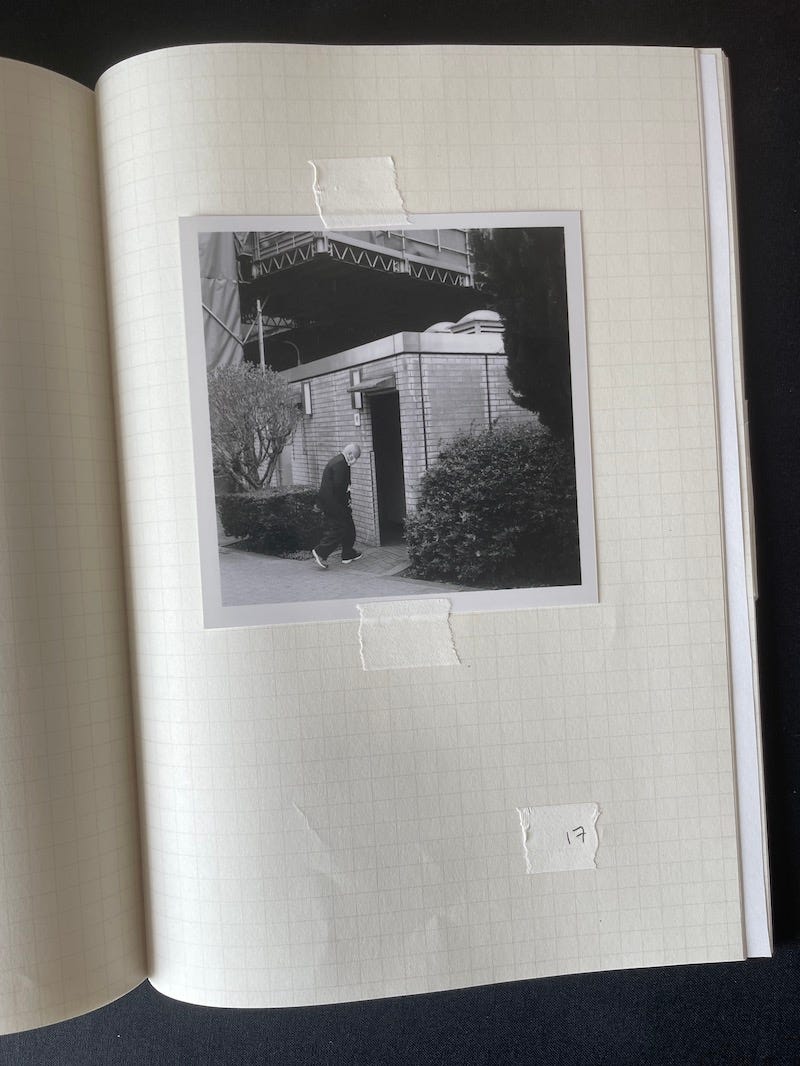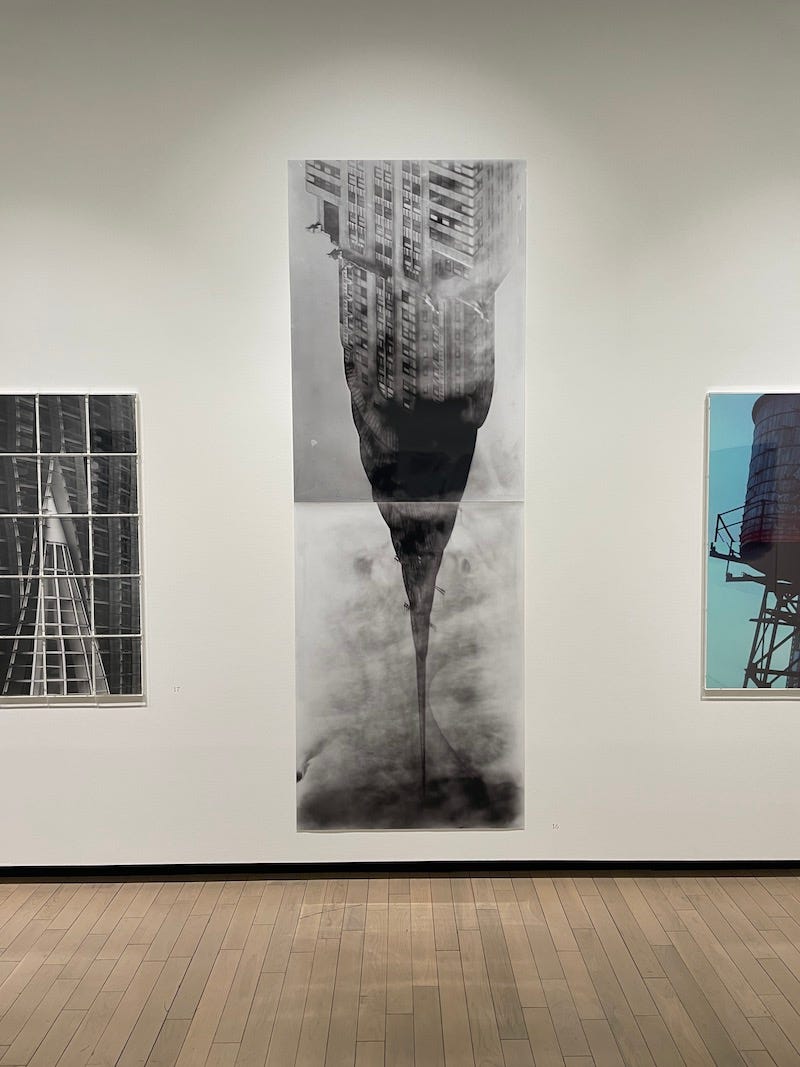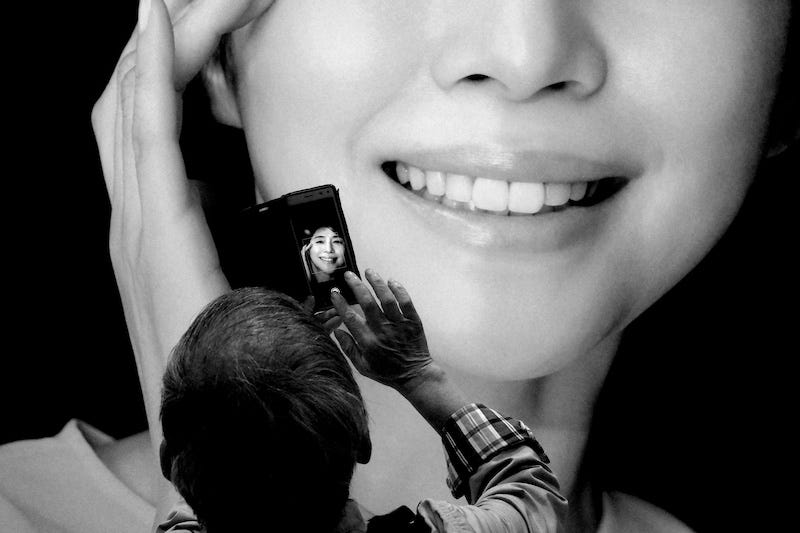Dear friends,
A warm welcome to the many new readers who have subscribed since I last wrote. In this monthly(-ish) newsletter, I write about my own photography, and about what else is happening in the Tokyo photography world. Let’s dive in.
I am deep into the process of publishing the second in a series of small books about my neighborhood. This one is titled Restrooms. It contains photographs of every public restroom in my neighborhood. And, there are many! People where I live spend a great deal of their lives outside the home.
Restrooms covers exactly the same geographic territory as Slopes, but with a different way of approaching the same place. And this is how I intend magic to happen. Let me explain.
When I was a child, we had a book on human anatomy. It contained a number of clear plastic pages printed with different bodily systems—one with the human skeleton, one with the circulatory system, one with all the muscles, and so on. Each page was interesting, and worth studying on its own, but when you laid them over each other, a new, more complex vision emerged.
That’s what I am working to achieve with these small books about my neighborhood. Each stands alone, exploring aspects of the neighborhood that are easy to overlook. Together, I hope that they will create a layered, complex view of this place I call home.
I want to keep this serial project affordable for those who would like to follow it. So for those who purchased Slopes, I will be offering the opportunity to purchase Restrooms at a significant discount. But more on that when the book is released in perhaps a month or two.
Since I’m still in the bookmaking stage, I’d like to tell you a bit about my process. Slopes contains photos of every named slope in my neighborhood; Restrooms contains photos of every public restroom. (That comprehensive approach is another important aspect of each book.) So for each one, I start by making a list of all the locations I need to photograph. I then visit each one at several times of day, observing the light and the rhythm of the people who pass by. Finally, I begin shooting.
When I have made four or five shots I love of each location, I print them all out as small squares, and begin to sequence them. Rhythm and variety are important; sometimes, a favorite photo will have to be left out because a different photo of the location fits the sequence better.
I then tape my selections into a notebook that matches the dimensions of the final book. I write in the page numbers, colophon, and other details on pieces of tape that can be easily rearranged. I select a photo for the cover and write a short essay.
Once I have made a complete dummy book in this way, I let it sit for a few weeks, then revisit it and make adjustments, perhaps replacing some of the photographs or changing the way they are ordered. And again. When I am satisfied, I turn it all over to my co-designer, Chihiro Kobayashi, to work further on the details and prepare it for print.
That’s where we are now. After the final version of Restrooms is submitted to the printer, I’ll begin preparing for shipping. Then, once it arrives from the printer, I’ll announce it in my newsletter.
And already, I’m beginning the cycle again for the next volume.
In the Tokyo photography world, it’s been a relatively quiet fall. Yes, there have been plenty of exhibitions and events—there always are—but very little that I would consider major. Perhaps the most well advertised has been the Takashi Homma exhibition at the Tokyo Museum of Photographic Art. It is entirely dedicated to his work with a pinhole camera. The works on display span several different projects of his, so the exhibition ends up being more about technique than about what he has to say photographically. But still, some of the photographs really are stupendous.
I’ve been spending more time than usual reading books on photographic criticism and theory, and I have been particularly focused on the thinking of Osamu Kanemura. I don’t always agree with his ideas, but they are worth pondering. For example, he writes that our ideas of beauty—cherry blossoms in Japan, Parisian landscapes—are conditioned by the media and the ideologies that the media supports. Thus, he says, developing one’s own personal style as a photographer requires one to first doubt what the media defines as beautiful.
Kanemura has quietly published two slim books of photography this year, Tombstone Pile Driver and Medeia 2.0 Issue 03. Neither contains too much new—Kanemura acknowledges he has been taking the same sorts of photographs for twenty years, and is suspicious of the view that art must “progress.” Both are finely done, but if pressed, I would say that the rough paper of Medeia suits Kanemura’s photography better, plus the accompanying essay is one of his best. Recommended for fans of his work.
And that’s all for this newsletter. I’ll close with a photograph I took in October, unrelated to any project. The photographer in the photo is clearly responding to the media’s idea of beauty. So maybe Kanemura would say he lacks a personal style. But maybe it doesn’t matter. The photographer is enjoying what he’s doing. And I enjoyed photographing the photographer photographing the photograph.
Have I already written thirty issues of this newsletter? Thank you so much for reading.
With kind wishes,
Joel




